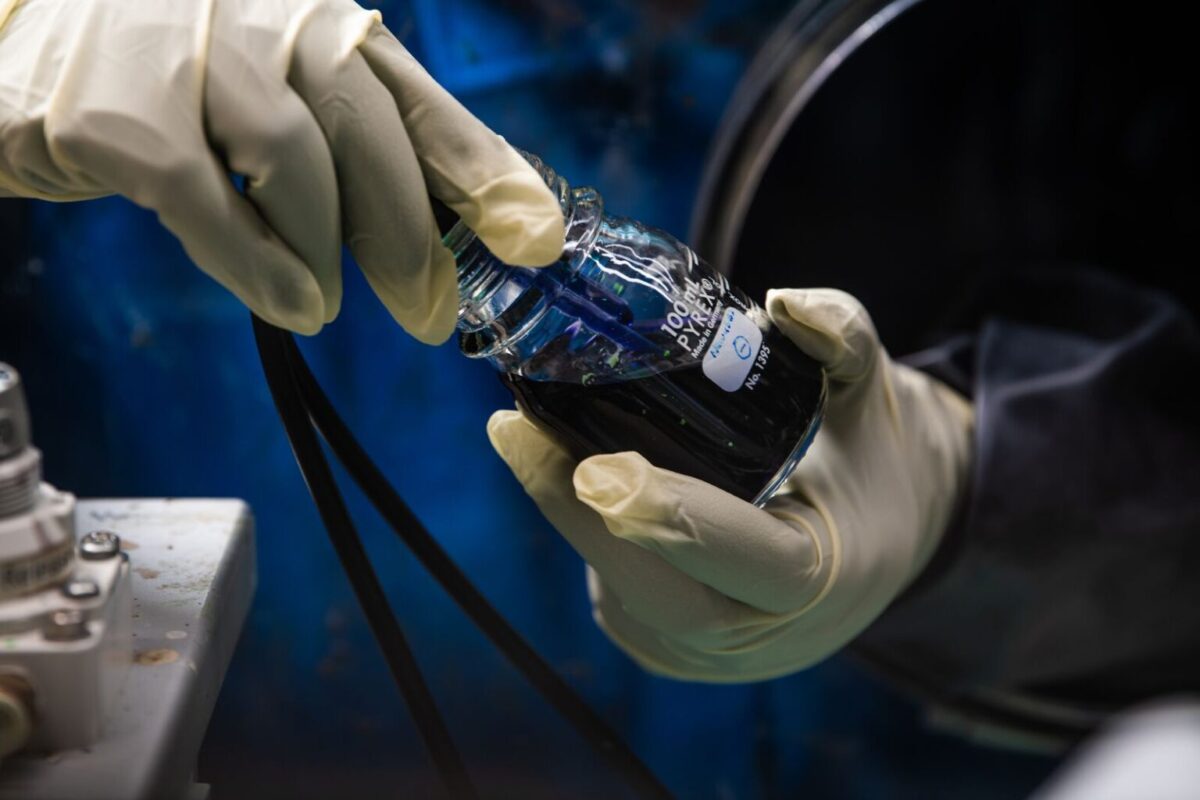From pv magazine USA
Flow batteries, two-chambered devices holding liquid electrolyte, are actively developed across the world as grid-scale energy storage solutions for renewable energy systems.
PNNL has made a significant breakthrough by developing an electrolyte additive called β-cyclodextrin. This additive, derived from a simple sugar used in food and pharmacology, has shown remarkable results in flow batteries. The PNNL team achieved a 60% increase in peak power for a research flow battery.
β-cyclodextrin speeds up the electrochemical reaction responsible for storing and releasing energy in flow batteries. Unlike previous methods, the sugar acts as a dissolved solution rather than a solid applied to a surface, marking a first for flow batteries. The findings, published in Joule, demonstrate the sugar additive's ability to accept positively charged protons, contributing to the balanced movement of negative electrons during battery discharge.

“This is a brand new approach to developing flow battery electrolyte,” said Wei Wang, s PNNL battery researcher. “We showed that you can use a totally different type of catalyst designed to accelerate the energy conversion. And further, because it is dissolved in the liquid electrolyte it eliminates the possibility of a solid dislodging and fouling the system.”
Popular content
The research aims to reduce the reliance on rare-earth minerals and toxic substances in battery energy storage, promoting a more sustainable approach that mirrors the synthesis methods used in the pharmaceutical and food industries, rather than relying on heavy minerals mining.
Continuing their investigations, the team is exploring alternative compounds akin to β-cyclodextrin but of smaller size. While the addition of the simple sugar thickens the liquid, similar to adding honey to tea, this presents challenges for a flow-based system. However, the researchers concluded that the catalytic advantages of the sugar outweighed the viscosity drawbacks.
This research is part of a larger PNNL program to develop and test grid-scale energy storage technologies. The university is set to open a Grid Storage Launchpad in 2024. Learn more about licensing this PNNL-developed technology here.
This content is protected by copyright and may not be reused. If you want to cooperate with us and would like to reuse some of our content, please contact: editors@pv-magazine.com.



By submitting this form you agree to pv magazine using your data for the purposes of publishing your comment.
Your personal data will only be disclosed or otherwise transmitted to third parties for the purposes of spam filtering or if this is necessary for technical maintenance of the website. Any other transfer to third parties will not take place unless this is justified on the basis of applicable data protection regulations or if pv magazine is legally obliged to do so.
You may revoke this consent at any time with effect for the future, in which case your personal data will be deleted immediately. Otherwise, your data will be deleted if pv magazine has processed your request or the purpose of data storage is fulfilled.
Further information on data privacy can be found in our Data Protection Policy.